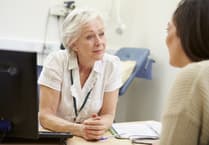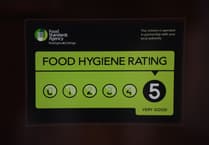The number of weekly coronavirus cases confirmed across Devon and Cornwall has dropped nearly 40 per cent and down to the lowest levels since mid-September
A total of 380 new cases were confirmed across the two counties in the last week – the lowest since the week ending September 25 – with the total since the start of the pandemic at 45,964
Cornwall has the second lowest infection rates of any upper tier authority in England, with Devon third, only behind the Isle of Wight, and at a lower tier level, the four of the five lowest infection rates are in Devon.
Government statistics show that 380 new cases have been confirmed across the region in the past seven days in both pillar 1 data from tests carried out by the NHS and pillar 2 data from commercial partners, compared to 650 new cases confirmed last week.
Of the 380 new cases confirmed since February 26, 78 were in Cornwall, with 67 in East Devon, 29 in Exeter, 23 in Mid Devon, 14 in North Devon, 86 in Plymouth, six in South Hams, 24 in Teignbridge, 41 in Torbay, six in Torridge and six in West Devon
For specimens from between February 22 and 28, West Devon is the area in England with the lowest infection rate (9/100,000), with South Hams 2nd (10.3/100,000), Torridge 3rd (11.7/100,000), North Devon 5th (17.5/100,000), Teignbridge 8th (20.9/100,000), and Cornwall 9th (21/100,000). Mid Devon (27.9/100,000), Torbay (33.8/100,000), Plymouth (36.2/100,000), Exeter (36.5/100,000) and East Devon (36.9/100,000) are the other areas.
The latest positivity rates for tests carried out at 1% in Cornwall 1.3% in East Devon, 1.3% in Exeter, 1.2% in Mid Devon, 0.7% in North Devon, 1.2% in Plymouth, 0.5% in South Hams, 0.8% in Teignbridge, 1.1% in Torbay, 0.4% in Torridge and 0.3% in West Devon.
In terms of infection rates per age range, case rates are highest in the over 80s in Devon, although this figure is skewed due to a couple of care home outbreaks in East Devon and Mid Devon – areas that have over 80s with the highest infection rates.
Exeter has its highest infection rates in the 40-59 age range, while every other authority is seeing its highest figures in the 20-39s. But in Devon, no age group has an infection rate of more than 50/100,000.
The number of patients in all of Devon’s hospitals following a positive Covid-19 test has fallen to levels not seen since the middle of October – and more than halved in a week.
As of Tuesday morning (March 2), there were 43 patients across the county in hospital after a positive test, down on the 89 as of the previous Tuesday.
And in Cornwall, the patients in hospital have also more than halved, dropping from 50 last week to 23 as of Tuesday.
There are no patients at all in the Exeter Nightingale Hospital – with February 26 seeing its final patients discharged – and both the Royal Devon and Exeter Hospital and Derriford Hospital both are at their lowest figure since October 19.
Steve Brown, director of public health Devon, said that testing for coronavirus is going to be the cornerstone of our transition back to normal life.
He said: “Over coming weeks and months, we are going to see a lot more movement of people – students returning to education, more people getting back to work, the loosening of restrictions on how many people we can be in contact with, and in time shops, cafes, and other businesses reopening.
“Coronavirus thrives on socialisation, which is why we see case numbers fall during lockdown, when movement and socialising is restricted.
“Taking a test regularly – the rapid tests that give results within the hour – is going to be an absolutely vital part of our way out of the coronavirus pandemic.
“Local community testing sites are available to anyone who work or whose volunteering requires them to be in contact with other people. We are also encouraging parents of secondary school and college-age students to use the community testing centres, as well as people in support bubbles. The tests are very quick and easy to take and results are texted or emailed back to you within the hour.”
He added: “As restrictions do start to lift, it’s so important that we continue to follow the national lockdown measures and stay at home and only go out if it is absolutely essential. If you do go out, remember: wear your face covering when you’re in a public place indoors, keep social distance from one another, and wash your hands regularly.
“The vaccine is part of our way out of coronavirus. But not on its own or in isolation of the other prevention measures.”By Daniel Clark, local democracy reporter




